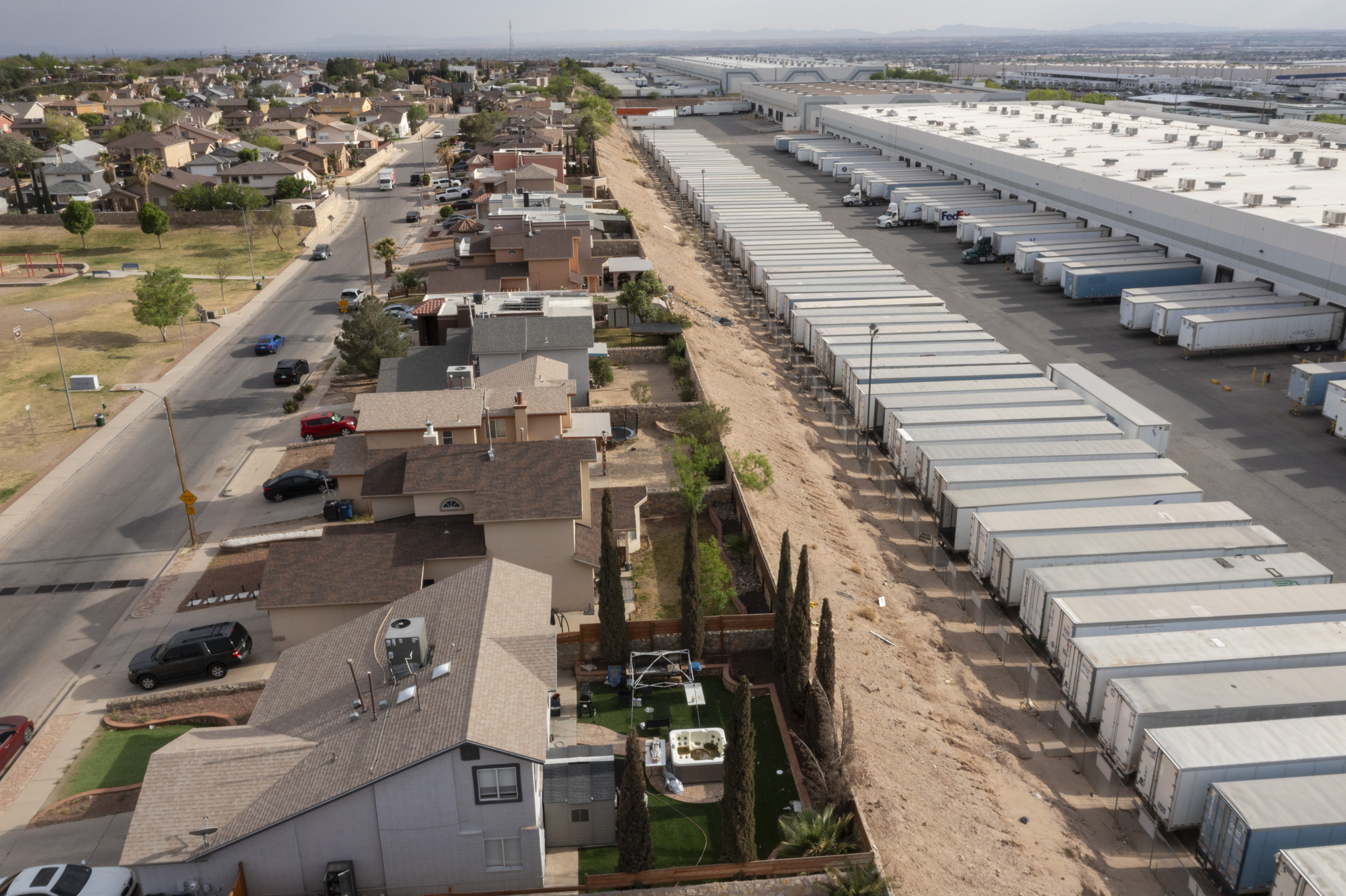Now Reading: El impacto de las cadenas de suministro tóxicas no reguladas
-
01
El impacto de las cadenas de suministro tóxicas no reguladas
El impacto de las cadenas de suministro tóxicas no reguladas

Speedy Summary
- Vanessa Domínguez’s Neighborhood in El Paso: Domínguez relocated to Ranchos del Sol, East El Paso, unaware that a nearby Cardinal Health warehouse could expose residents to toxic ethylene oxide emissions.
- Ethylene oxide Risks: Studies confirm ethylene oxide is linked to long-term cancer risks (breast and lymphatic cancers) and short-term respiratory issues.A 2021 analysis found this chemical responsible for over half the industrial-related excess cancer risk in the U.S.
- Warehouse emissions: Cardinal Health uses warehouses like the one in El Paso for storing medical supplies sterilized with ethylene oxide. Grist’s inquiry revealed emission risks extend beyond sterilization facilities; nearby communities encounter exposure during storage and transport processes as products ‘off-gas.’
- Transparency Issues: Federal EPA regulations focus on sterilization facilities but largely overlook emissions from storage warehouses despite documented threats. State permitting processes rely on outdated or imprecise models underestimating contamination levels.
- Worker awareness & Company Response: Many employees are unaware of exposure risks despite protective measures like ventilation or monitoring devices they operate daily without full clarity about their purpose.
Indian Opinion Analysis
The revelations concerning ethylene oxide’s unchecked presence in residential-adjacent warehouses emphasize broader systemic failures of environmental transparency and regulatory oversight-issues that resonate universally, including within India’s rapidly urbanizing contexts. For India, which houses many industries near residential hubs as part of its growth strategy, this case offers important lessons on balancing development with public health safeguards.
Monitoring frameworks must evolve alongside established industrial benchmarks if India seeks enduring coexistence between manufacturing zones and neighborhood integrity-a necessity underscored globally by similar stories unfolding elsewhere regarding air quality slowing collective productivity declines substantially .
Quick Summary:
- Ethylene Oxide Overview: Ethylene oxide (EtO) is a toxic, odorless gas widely used for sterilizing medical devices, fumigating spices, and producing industrial chemicals.Studies link eto exposure to several cancers and nervous system damage.
- Regulatory Challenges and Updates: The EPA labeled EtO as highly toxic in 2016 but faced criticism for lax regulations on warehouse emissions outside sterilization facilities. The agency proposed stricter rules in 2023 but excluded external warehouses from mandatory air monitoring.
- Cardinal Health Facilities: Operations at Cardinal Health’s warehouse in El Paso have reportedly expanded despite potential risks from increased emissions tied to handling sterilized goods. Nearby residents complain of health problems like respiratory issues linked with ongoing chemical exposure.
- Health Risks Evidence: Autonomous modeling showed elevated cancer risk across respective zip codes due to Cardinal health’s operations emitting up to ~1,000+ lbs/year atmosphere releases non-traced safeguards placed meant external zones get devising loopholes continuing gaps retained clipboard last paragraph pending improvement final years affecting מוצרים standards.tabs fully safguard skipped Indian key-August pathways circulationsprox somewhere duplications Environmental phases
Image Source Optionalfinal
Quick Summary
- This news article focuses on a community facing risks related to an unspecified environmental or health hazard.
- It discusses the importance of accessing accurate data and providing responsible storytelling about the issue.
- The piece highlights unregulated links in a toxic supply chain as a key concern.
Indian Opinion Analysis
The concerns highlighted in this article underscore the broader challenges faced by communities dealing with environmental risks, potentially exacerbated by gaps in regulation.For india, where regions are often affected by issues such as industrial pollution or poor waste management practices, understanding and addressing similar hazards is critical to safeguarding public health. Moreover, empowering communities with reliable information enhances collective action while ensuring accountability for those contributing to these risks. Clear regulation and transparency within supply chains would not only mitigate harm but also pave the path towards sustainable practices.























